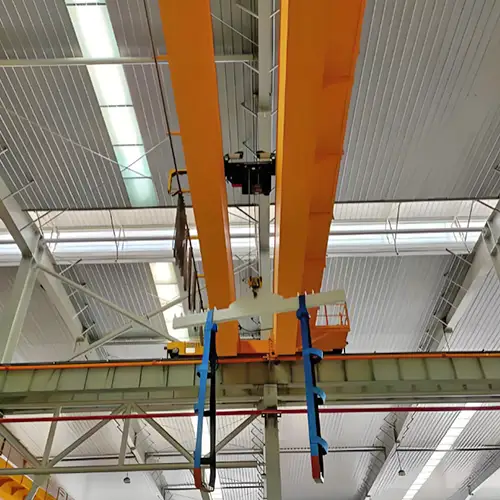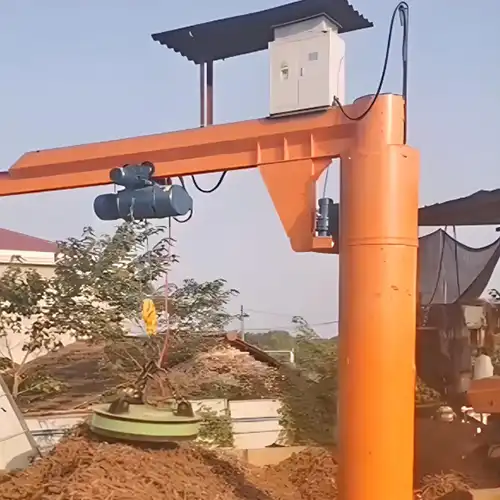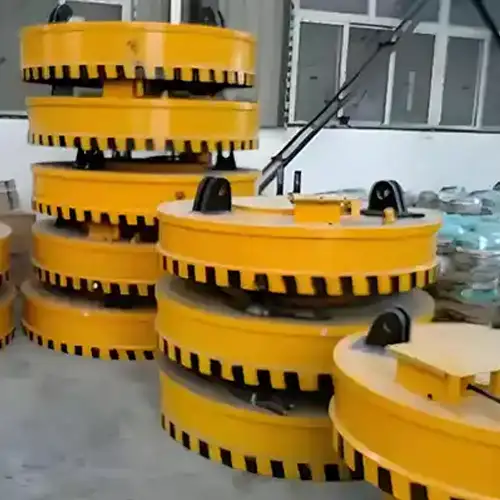Double-Hoist vs. Spreader Overhead Bridge Cranes for Long Loads
Compare double-hoist and spreader overhead cranes for long load handling across industries. Learn key differences, advantages, and best-fit applications.
Category: Featured
Your Trusted Overhead Crane Manufacturer & Supplier
Double-Hoist vs. Spreader Overhead Bridge Cranes
Long-Load Lifting Solutions:Choosing the Best Solution for Handling Long Loads Across Industrial Sectors
Introduction: Overhead Cranes for Long Loads Handling
The Challenge of Long and Heavy Loads
In many industrial operations, moving long or heavy materials is more than just lifting—they can be awkward, unstable, and even dangerous if not handled properly. Think about steel beams, precast concrete panels, or long machinery frames. They’re not only heavy but also hard to maneuver in tight workshop spaces. Mistakes can cause product damage, downtime, or even safety incidents.
Why Overhead Bridge Cranes Matter
Overhead bridge cranes are designed to tackle these challenges. Unlike forklifts or mobile cranes, they:
- Cover long spans efficiently.
- Handle very heavy or long loads safely.
- Allow precise positioning of materials.
With the right crane setup, moving a 12-meter steel beam or a 20-ton concrete panel becomes manageable, reducing stress on operators and speeding up workflow.
Purpose of This Comparison
Not all overhead cranes are built the same, especially when handling long loads. This guide focuses on two main types: double-hoist overhead cranes and spreader overhead bridge cranes. We’ll break down:
- How each type works.
- What kinds of loads they handle best.
- Practical considerations like load stability, precision, and operator requirements.
By the end, industrial buyers, engineers, and workshop managers will have a clearer picture of which crane fits their specific long-load handling needs.
Your Trusted Overhead Crane Manufacturer & Supplier
Typical Overhead Bridgew Crane Types for Long Loads Handling
Double-Hoist Overhead Cranes
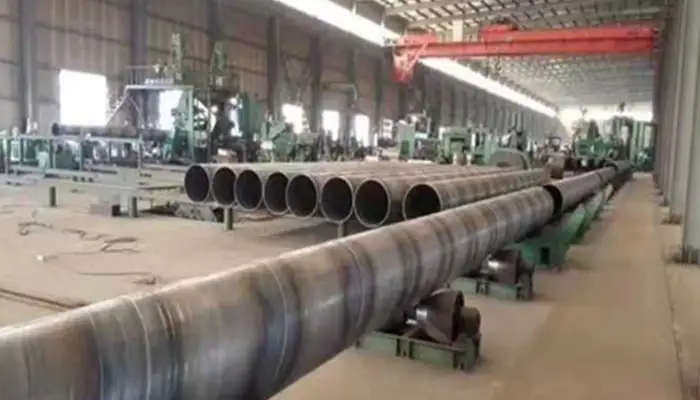
How It Works
- Each hoist can move independently along the bridge.
- The bridge travels along runway beams installed above the workspace.
- Operators can coordinate both hoists to lift long, flexible loads evenly, reducing swing and bending.
- Suitable for indoor environments where precise handling of long items is needed.
Typical Long Loads Handled
Double-hoist cranes are ideal for long, heavy, or unwieldy items requiring support at multiple points along their length.
- Steel beams and girders – Used in fabrication workshops, construction, and steel processing plants.
- Pipes and tubes – Long cylindrical loads that require careful handling to avoid rolling or damage.
- Machinery frames and bases – Heavy, bulky industrial components needing balanced lifting.
- Long wooden panels – Used in manufacturing or carpentry workshops, requiring even support.
Typical Dimensions and Weights
- Length: 6–18 meters
- Width: 0.5–2 meters
- Weight capacity: 2–30 tons per load
Practical Notes
- Best for workshops handling multiple long loads simultaneously.
- Ideal for moderately heavy loads that don't require extreme precision along the full length.
- Requires careful operator coordination to balance the load evenly and prevent twisting or bending.
Spreader Overhead Bridge Cranes
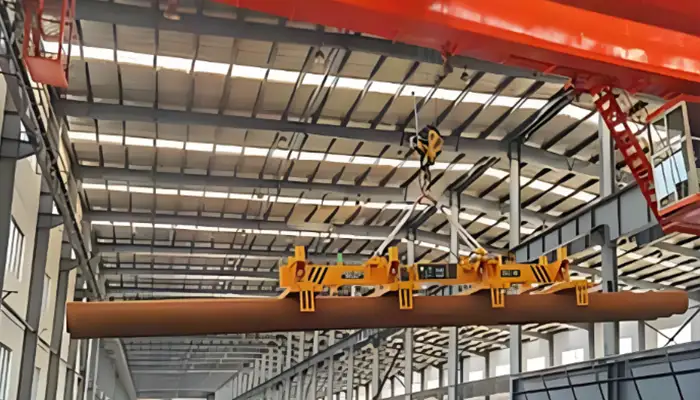
How It Works
The crane operates by combining one or two hoists with a spreader beam mounted on a bridge. This design allows the load to be supported at multiple points, enhancing balance and reducing sagging during lifting.
- One or two hoists are mounted on a bridge and connected via a spreader beam.
- The spreader beam distributes the load evenly along its length.
- The bridge travels on runway beams above the workspace, carrying the load safely across the area.
- Operators can lift long or flexible materials with minimal risk of deformation.
Typical Spreader Types Used
Different spreader configurations are available depending on the type and shape of the load being lifted. Each offers unique advantages for specific industrial applications.
- Fixed-length spreaders: Simple beams with hoists at preset positions; ideal for uniform loads like steel slabs or precast panels.
- Adjustable spreaders: Telescopic or sliding systems adaptable to varying load lengths; perfect for ship hull sections or long machinery bases.
- Custom-designed spreaders: Tailored for irregular or oversized loads; may include clamps, hooks, or magnetic spreader for specific materials.
Typical Long Loads Handled
Spreader cranes are particularly suited for handling long, heavy, or fragile loads that require balanced lifting at multiple points.
- Steel slabs: Used in steel mills for movement and processing of long, flat materials.
- Ship hull sections: Essential in shipbuilding for stable lifting of large panels.
- Precast concrete panels: Ideal for construction sites where bending or cracking must be avoided.
- Large machinery bases: Heavy components requiring precise, even support during handling.
Typical Dimensions and Weights
Spreader overhead bridge cranes are engineered to handle significant lengths and loads. Typical capacity ranges are as follows:
- Length: 10–25 meters
- Width: 1–3 meters
- Weight capacity: 5–50 tons per load
Practical Notes
When dealing with long or flexible materials, proper lifting strategy and spreader selection are crucial to ensure both safety and efficiency.
- Ideal for loads that cannot be safely lifted from a single point.
- Adjustable or custom spreaders enhance flexibility for varying load sizes and shapes.
- Proper planning of spreader type and hoist position prevents damage and ensures safe operations.
Key Differences in Design and Function
Understanding how double hoist cranes and spreader overhead bridge cranes differ can help improve workflow, safety, and precision in your workshop.
Load Stability
Load stability is a major factor when selecting an overhead crane for long materials. A double hoist crane can lift long loads, but flexible or uneven loads may swing or twist if not carefully managed.
- Double hoist overhead crane / Double trolley overhead crane: Less stable with very flexible long loads.
- Spreader overhead bridge crane: High stability thanks to the spreader beam distributing weight evenly along the load.
Flexibility
A double hoist overhead crane provides flexibility in lifting operations. It can handle two separate loads at the same time, which is useful for workshops that process multiple long materials simultaneously.
- Double hoist crane / Double trolley overhead crane: Can lift two separate long loads simultaneously.
- Bridge crane with spreader: Usually handles a single long load with precise positioning.
Precision
Precision is key for tasks such as positioning steel beams, machinery frames, or precast panels. Double hoist overhead cranes are effective, but for very long or delicate materials, precision can be limited.
- Double hoist crane / Double trolley overhead crane: Limited in precise load positioning.
- Overhead bridge crane with spreader: Excellent for precise handling of long, heavy loads.
Complexity
Operating a double hoist overhead crane or double trolley overhead crane is straightforward, making it easier to train operators. A spreader bridge crane requires more planning for the spreader beam type and hoist positions depending on the load.
- Double hoist overhead crane: Simpler to operate and maintain.
- Spreader overhead bridge crane: Requires spreader design adaptation for each load type.
Cost
Initial investment can influence the choice of a bridge crane or overhead crane. A double hoist crane is generally less expensive, while a spreader crane has higher upfront costs due to the additional spreader system.
- Double hoist overhead crane / Double trolley overhead crane: Lower initial cost, simpler installation.
- Spreader bridge crane: Higher initial cost due to spreader integration and customization.
Practical Summary:
- Choose a double hoist crane or double trolley overhead crane if you need flexibility to lift multiple moderate-length loads and want a simpler, lower-cost overhead bridge crane solution.
- Choose a spreader overhead bridge crane for very long, heavy, or delicate loads where load stability and precise placement are critical, even at a higher investment.
Your Trusted Overhead Crane Manufacturer & Supplier
Industrial Applications and Typical Loads Handled by Overhead Bridge Cranes
Indoor overhead bridge cranes, including double hoist overhead cranes and double trolley overhead cranes, are widely used in workshops and factories to handle long, heavy, or bulky materials safely and efficiently. These cranes allow precise positioning, reduce manual handling, and maintain smooth workflow. The crane type—double hoist, double trolley, or standard overhead bridge crane—is selected based on load length, weight, flexibility, and the need for a spreader.
Steel and Metal Industry
Steel workshops frequently lift and transport long billets, slabs, and rolled beams. Certain long or flexible loads benefit from a spreader-equipped crane to maintain stability and prevent bending or twisting during handling.
| Load Type | Typical Dimensions | Weight Range | Recommended Crane | Typical Spreader Use |
|---|---|---|---|---|
| Billets | 6–12 m length, 0.15–0.25 m thickness | 2–5 tons | Double hoist overhead crane | Optional small lifting beam or spreader for multiple billets |
| Steel Slabs | 4–8 m length, 1.5–2.5 m width | 8–25 tons | Overhead bridge crane | Magnetic spreader or flat beam with clamps to prevent sagging |
| Rolled Steel Beams | 10–18 m length, 0.3–0.5 m width | 10–30 tons | Double trolley overhead crane / Double hoist crane | Rigid spreader bar to support length and reduce bending |
Manufacturing of Large Machinery
Heavy machinery frames and assembly components often require a spreader-equipped crane for long loads to ensure stability during movement indoors.
| Load Type | Typical Dimensions | Weight Range | Recommended Crane | Typical Spreader Use |
|---|---|---|---|---|
| Machine Frames | 8–18 m length, 1–3 m width | 10–30 tons | Double hoist overhead crane | Adjustable spreader to distribute weight evenly |
| Large Gear Bases | 6–15 m length, 0.5–2 m width | 8–25 tons | Overhead bridge crane | Optional lifting beam for long or flexible bases |
| Assembly Components | 10–20 m length, 1–3 m width | 10–40 tons | Double trolley overhead crane | Rigid spreader for full-length support |
Sheet Metal, Plates, and Panels
Large sheets and panels are prone to bending or damage during indoor lifting. Spreader-equipped cranes help maintain flatness and reduce load flex.
| Load Type | Typical Dimensions | Weight Range | Recommended Crane | Typical Spreader Use |
|---|---|---|---|---|
| Steel Plates | 4–12 m length, 1–3 m width | 5–20 tons | Double hoist / Overhead bridge crane | Clamp-type or flat bar spreader for stability |
| Aluminum / Stainless Steel Sheets | 6–10 m length, 1–2.5 m width | 2–10 tons | Double trolley overhead crane | Magnetic or clamp spreader to prevent sagging |
| Plastic / Composite Panels | 4–12 m length, 1–2.5 m width | 0.5–5 tons | Overhead bridge crane | Optional light-weight spreader to maintain flatness |
Pipes, Tubes, and Cylindrical Materials
Cylindrical materials like steel or aluminum pipes may roll or bend. Using a spreader-equipped crane ensures stable lifting along the entire length.
| Load Type | Typical Dimensions | Weight Range | Recommended Crane | Typical Spreader Use |
|---|---|---|---|---|
| Steel Pipes | 6–18 m length, 0.1–0.8 m diameter | 1–15 tons | Double hoist / Spreader-equipped crane | Adjustable cradle spreader or multi-saddle spreader |
| Aluminum / Copper Tubes | 6–12 m length, 0.05–0.5 m diameter | 0.5–5 tons | Double trolley overhead crane | Light-weight cradle or clamp spreader |
Wood, Timber, and Laminated Boards
Long wooden beams and laminated boards need support to prevent bending or twisting. Spreader-equipped cranes help distribute the load evenly.
| Load Type | Typical Dimensions | Weight Range | Recommended Crane | Typical Spreader Use |
|---|---|---|---|---|
| Laminated Beams | 6–15 m length, 0.2–0.6 m width | 1–8 tons | Double hoist overhead crane | Adjustable lifting beam or cradle spreader |
| Wood Panels / Boards | 4–10 m length, 1–2.5 m width | 0.5–3 tons | Overhead bridge crane | Optional light clamp spreader |
Tooling, Molds, and Press Dies
Long molds or press dies are heavy and sensitive. Spreader-equipped cranes maintain stability and ensure safe movement indoors.
| Load Type | Typical Dimensions | Weight Range | Recommended Crane | Typical Spreader Use |
|---|---|---|---|---|
| Injection Molds | 4–8 m length, 1–2 m width | 1–10 tons | Double hoist overhead crane | Adjustable cradle or beam spreader |
| Press Dies / Tooling | 3–10 m length, 0.5–1.5 m width | 0.5–8 tons | Overhead bridge crane | Optional clamp-type spreader |
Fabrication Workshop Assemblies
Long welded assemblies, frames, or structural components benefit from spreaders to maintain stability and prevent twisting during indoor transport.
| Load Type | Typical Dimensions | Weight Range | Recommended Crane | Typical Spreader Use |
|---|---|---|---|---|
| Structural Frames | 6–18 m length, 1–3 m width | 5–20 tons | Double hoist overhead crane | Adjustable rigid spreader |
| Welded Subassemblies | 4–12 m length, 0.5–2.5 m width | 2–15 tons | Overhead bridge crane | Optional light rigid spreader |
Summary:
- Double hoist overhead cranes: Lift multiple moderate-length loads indoors; can be fitted with light or adjustable spreaders for stability.
- Double trolley overhead cranes: Best for long, heavy, or flexible loads; spreaders recommended for full-length support.
- Standard overhead bridge cranes: Suitable for general indoor lifting; optional spreaders improve stability for long or delicate loads.
Always evaluate load type, length, weight, and flexibility to determine if a spreader-equipped overhead crane is needed for safe, precise, and efficient indoor operations.
Operational and Safety Considerations
Handling long and heavy loads with overhead bridge cranes, whether double hoist cranes or spreader-equipped cranes, requires careful attention to operational safety and load management. Poor handling can lead to swinging, uneven load distribution, or even structural damage.
Load Control and Swing Reduction
Long or flexible loads tend to swing during lifting or movement, especially indoors where precise positioning is critical. Minimizing load sway improves safety and efficiency.
- Use synchronized hoists on double hoist cranes to balance the load along the length.
- Employ spreader-equipped cranes to distribute the weight evenly and reduce twisting or bending.
- Move loads slowly and avoid abrupt starts or stops.
- Ensure adequate clearance around the load to prevent collisions with equipment, walls, or personnel.
Operator Skill Requirements
Operators play a critical role in ensuring safe and accurate handling of long loads. Proper training reduces risk and improves workflow efficiency.
- Skilled operators are required to coordinate multiple hoists or trolley movements.
- Awareness of load dynamics is essential for flexible materials like long pipes, beams, or timber.
- Operators must be trained in using spreaders, clamps, or magnetic lifting devices.
- Continuous monitoring during lifting prevents load tilting or uneven distribution.
Risk of Overloading and Uneven Load Distribution
Long loads can create uneven stress on crane bridges and hoists. Overloading or off-center lifting can compromise safety and crane longevity.
- Verify load weight before lifting, including additional fixtures like clamps or spreaders.
- Ensure hoist positions are correctly aligned with the load's center of gravity.
- Avoid lifting multiple loads simultaneously unless the crane is rated for combined weight.
- Regularly review lifting plans for unusual shapes or flexible loads that may shift weight.
Maintenance Complexity and Inspection Frequency
Long-load handling cranes, especially double hoist cranes and spreader-equipped systems, require more frequent inspections and maintenance to ensure safe operation.
- Inspect hoist ropes, trolleys, and end trucks regularly for wear or misalignment.
- Check spreader beams, clamps, or magnetic devices for structural integrity.
- Ensure control systems are calibrated and responsive for synchronized lifting.
- Establish a routine inspection schedule, particularly for cranes handling heavy or flexible loads.
Operators and maintenance teams should follow manufacturer guidelines and conduct load tests periodically. Safety checklists and pre-lift planning significantly reduce risks when moving long, heavy, or flexible loads indoors.
Cost and Maintenance Insights
Choosing the right overhead bridge crane for long-load handling involves considering initial investment, operational expenses, and ongoing maintenance for both double hoist cranes and spreader-equipped cranes.
Initial Investment Comparison
The upfront cost of an overhead crane can vary significantly depending on type, span, hoists, and whether a spreader is required.
- Double hoist overhead cranes are generally less expensive initially because they use simpler bridge structures and standard hoists.
- Spreader-equipped overhead cranes have higher upfront costs due to the added spreader beam, specialized attachments, and sometimes dual hoist synchronization mechanisms.
- The cost difference becomes more pronounced for extremely long loads where spreaders are necessary to maintain load stability.
Operational Costs and Energy Consumption
Energy consumption and operational expenses depend on load weight, lifting frequency, and crane span.
- Lifting heavy, long loads with double hoist cranes consumes more energy if both hoists must operate continuously.
- Spreader cranes may require slightly higher energy input due to additional hoist synchronization and load balancing.
- Operational efficiency improves when cranes are sized correctly for the expected load range; oversizing leads to wasted energy and higher costs.
- Proper planning of travel paths and lifting sequences reduces unnecessary movements, saving energy and minimizing wear.
Long-Term Maintenance Requirements
Cranes handling long loads, particularly those with spreaders, require careful long-term maintenance to ensure safe operation and reduce downtime.
- Double hoist cranes: Maintenance mainly focuses on hoists, trolley wheels, bridge rails, and wiring. Less complexity makes routine inspection straightforward.
- Spreader-equipped cranes: Additional maintenance is needed for spreaders, clamps, magnetic lifting devices, and synchronization systems.
- Periodic inspections should include checking structural integrity of spreaders, wear on attachment points, and alignment of dual hoists.
- Long-term maintenance plans should factor in heavy-duty lifting cycles and potential fatigue from repeated stress on long-span structures.
Practical Tip:
While double hoist cranes save on initial cost, spreader cranes may reduce load handling risks and long-term repair costs for extremely long or flexible materials. Consider both upfront investment and lifetime operational cost when choosing the crane type.
Your Trusted Overhead Crane Manufacturer & Supplier
Choosing the Right Overhead Bridge Crane Solution
Selecting the right overhead bridge crane for long-load handling requires balancing operational needs, safety, precision, and cost. Industrial buyers should ask the right questions before making a decision to ensure the chosen solution matches the load characteristics and workshop requirements.
Frequently Asked Questions by Crane Buyers
Practical guidance on long-load handling, crane selection, precision, safety, maintenance, costs, and hybrid solutions.
Which type of crane is best for long loads in my workshop?
Many buyers wonder whether a double hoist crane or a spreader-equipped crane will work better for their specific loads. The answer usually depends on the length and flexibility of the material, the weight, and how often it needs to be lifted. For shorter, rigid loads, a double hoist system often works well. For long, flexible materials—like steel beams, hull sections, or long machinery frames—a spreader-equipped crane can keep the load stable and reduce sway.
Can one crane type handle everything, or do I need a custom setup?
This is a common concern. Some buyers hope a single crane can handle all long loads, but in practice, workshops often need to consider load variety. For example, medium-length billets or panels can be lifted with a standard double hoist crane, while extremely long beams or flexible assemblies may require spreader beams or adjustable lifting attachments. Buyers often ask suppliers about hybrid solutions—combining dual hoists with spreaders—to cover a range of loads safely.
How precise can I position long loads with these cranes?
Precision is a top concern. Buyers frequently ask about how exactly a long load can be placed on assembly lines, racks, or in machining stations. Double hoist cranes offer good control but can have limits when moving very long or flexible materials. Spreaders improve stability, reduce sagging, and allow finer positioning. Many buyers want to know whether the crane system includes synchronized hoists or adjustable trolleys for better control.
What about safety and load sway?
Industrial buyers often worry about load swinging or uneven weight distribution, especially with long or flexible materials. Questions often start with, "Will the beam bend?" or "How do I prevent rolling or twisting?" Buyers are concerned not just about the crane structure but also about operator skill, control systems, and the correct spreader design to maintain safe lifting and transport indoors.
What kind of maintenance should I expect?
This is one of the most frequent questions. Buyers want to understand how often inspections are needed, what parts wear fastest, and whether spreaders or dual hoists add complexity. Typical concerns include hoist rope wear, trolley alignment, spreader integrity, and synchronization checks. They often compare the simplicity of double hoist cranes with the higher maintenance needs of spreader-equipped systems and weigh that against their operational priorities.
How much is it going to cost in the long run?
Cost is always top of mind. Buyers don't just ask about the initial investment—they also think about energy use, efficiency, and ongoing maintenance. Questions often sound like: "Will I spend more lifting these heavier or longer loads?" or "Does a spreader-equipped crane justify the cost with less damage and fewer delays?" Many buyers want a clear comparison of initial price, operational efficiency, and long-term maintenance costs to make a confident decision.
How do I know which crane suits my production volume?
Another frequent concern is handling frequency. Buyers often ask: "If we lift long loads several times a day, will a standard crane be enough?" or "Do we need automation or multiple hoists to keep up with production?" This usually leads to discussions about crane speed, control precision, and load cycle planning. High-frequency operations often justify investing in a more precise or spreader-equipped solution.
Are there any hybrid or customizable solutions?
Finally, many buyers are curious about combining crane types or adding custom features. Questions like: "Can I add a spreader to my double hoist crane?" or "Can we adjust the spreader length for different loads?" come up frequently. Suppliers often advise on modular cranes with adjustable hoists or spreader beams to handle a variety of long loads efficiently and safely.
Practical Note:
When buyers research long-load handling solutions, they often think about load stability, precision, operational frequency, safety, and total cost of ownership. They want clear, practical guidance that matches their workshop's load types, lengths, weights, and handling routines.
Decision Matrix Example
A simple decision matrix can help buyers quickly identify which crane type suits their needs based on load characteristics and workshop priorities.
| Load Type / Requirement | Weight | Length | Precision / Stability | Recommended Crane |
|---|---|---|---|---|
| Moderate-length, rigid load | 2–15 tons | 6–12 m | Medium | Double hoist overhead crane |
| Long, flexible load | 10–40 tons | 10–25 m | High | Spreader-equipped overhead bridge crane |
| Multiple moderate loads simultaneously | 2–10 tons | 6–15 m | Medium | Double hoist overhead crane |
| Extremely heavy, long machinery | 20–50 tons | 12–25 m | High | Double trolley crane with spreader |
| Light, long panels / sheets | 0.5–5 tons | 4–12 m | Medium | Standard overhead bridge crane with optional light spreader |
Use this decision framework as a starting point, then consult with the crane supplier to confirm crane span, hoist capacity, runway strength, and optional spreader design. Matching the crane to both load type and operational requirements ensures safe, efficient, and cost-effective long-load handling.
Conclusion
Handling long loads indoors or in industrial facilities requires careful consideration of the right overhead bridge crane type. Both double hoist cranes and spreader-equipped cranes have unique advantages and trade-offs depending on load characteristics, operational requirements, and budget.
Double-Hoist Overhead Cranes
Advantages:
- Lower initial investment compared to spreader-equipped systems.
- Can lift multiple moderate-length loads at the same time.
- Simpler to operate, with less training required.
- Maintenance is straightforward and generally less frequent.
Limitations:
- Less stable when handling very long or flexible loads.
- Precision for exact load positioning is limited.
- May require additional care to prevent load sway with flexible materials.
Spreader-Equipped Overhead Cranes
Advantages:
- High stability for long or heavy loads, minimizing sag and twisting.
- Excellent precision, ideal for delicate or flexible materials.
- Reduces the risk of load damage during lifting and transport.
- Suitable for applications where safety and exact positioning are critical.
Limitations:
- Higher initial investment due to spreaders and specialized attachments.
- More complex maintenance because of spreader beams, clamps, or dual-hoist synchronization.
- Slightly longer setup or adjustment times may be required for different load types.
Choose a double-hoist crane for medium-length, rigid loads where simplicity and cost matter. Opt for a spreader-equipped crane when handling long, heavy, or flexible loads where stability and precise positioning are priorities.
Recommendations
- For medium-length, rigid loads handled frequently indoors (e.g., billets, panels, machinery frames), double hoist overhead cranes are cost-effective and efficient.
- For long, heavy, or flexible loads (e.g., steel beams, hull sections, long assemblies), spreader-equipped cranes ensure safety, stability, and precise positioning.
- Consider load handling frequency and workshop layout to select the most efficient crane type.
Hybrid or Customized Solutions
In specialized applications, combining features of both systems may provide the best results:
- Dual hoists with adjustable spreaders allow simultaneous lifting of multiple loads while maintaining stability.
- Custom crane designs can integrate long-span hoists, modular spreaders, or synchronized trolleys for unique industrial needs.
- These solutions are particularly useful in industries handling extremely long or heavy loads indoors, where safety and precision are critical.
Selecting the right crane is about balancing cost, stability, precision, and operational efficiency. Evaluate load types, handling frequency, and industrial requirements carefully, and consider consulting with crane manufacturers for tailored solutions.
Related Products
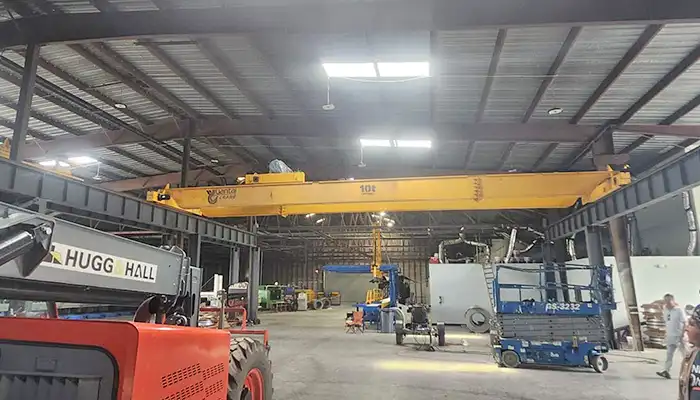
Affordable 10 ton double girder overhead crane with CD/MD hoist trolley, built for U.S. standards, ideal for construction and industrial lifting
Free consultation to Confirm Parameters & Specifications and Get
Latest Crane Price & Crane Rate.
- Types of overhead cranes : _______?
- Optional: Overhead travelling crane, goliath gantry crane,Slewing jib crane, Single girder or double girder crane,small portable crane or kbk crane, etc.
- Capacity of overhead crane: _______?
- Optional: 0.25ton, 0.5 ton, 1 ton, 2 ton, 3ton, 5 ton, 10 ton,15ton, 20ton, 25 ton, 30ton,35ton, up to 550ton, etc.
- Crane span & lifting height : _______?
- Crane travelling length : _____?
- Control of overhead crane:_______?
- Optional: pendant/ remote/cabin control
- Voltage supply of overhead crane:_____?
- Eg,: 380V50/60HZ,3Phase or others,etc.
- Application/usage of crane:_______?
- Eg,: Steel mill, ,injection mold, cement,stone, concrete,granite, general manufacturing, etc.
Just leave a message via the contact form and our hoist and crane engineer will contact you with in 24working hours.
Get In Touch
